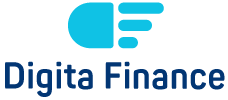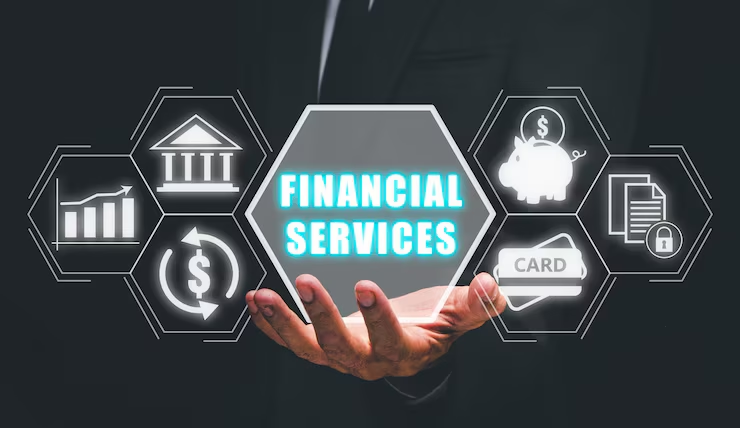Consumer financial services is no longer about waiting in long lines at the bank or shuffling through paperwork. Digitization has revolutionized the financial services industry and has made the sector faster and more efficient, as well as more customer-centric. The influence of digital technology in consumer finance is transforming an entire industry, from effortless mobile banking to financial advice driven by artificial intelligence.
In this blog, we will discuss the reasons why digitization is the future of consumer financial services and how it is a win-win situation for companies and users alike. We’ll touch on how it impacts customer experience, efficiency, accessibility, personalization, and security. By the end, you’ll agree why going digital is not a nice-to-have but rather a must-have for financial institutions if they want to grow and not die out.
Enhanced Customer Experience
The goal of the digitization lies in offering a better customer experience. Modern consumers expect things to be easy, quick, and seamless when it comes to their relationship with financial services providers. In all these senses, a digital-first policy solicits them to be fulfilled.
Seamless Access via Mobile and Web
No longer does one have to visit a bank branch for every single transaction. With apps and websites, they can now transfer money, apply for a loan or get financial advice without ever having to walk into a bank branch. And more than 76% of Americans are using online banking on a regular basis, according to a report by Insider Intelligence, reflecting this moved towards convenience.
Banks are taking mobile banking to the next level, offering sleek designs and 24/7 account access not only at banks like Chase, but also at digital-first platforms like Chime. This” is powered by Q bot, a chatbot exists in the app to make your life easy! 002Futbucksqq110 Are free and available for download! With this ease of access, our customers are never farther than just a few taps!
Real-Time Assistance
With AI-enhanced autonomous chatbots and virtual assistants, customers do not need to queue for routine support. These digital assistants, driven by strong machine learning algorithms, offer instant answers to standard questions, and even lead customers through complicated tasks such as opening an account or finding a mortgage.
In addition to being time-saving, digital interactions are also more satisfying as a whole. No one loves sitting in queue […] to waiting music or dealing with complicated call-center menus.
Improved Efficiency and Reduced Costs
Digitization isn’t just about convenient apps; it’s fundamentally changing how financial organizations operate behind the scenes to deliver faster, cost-effective services.
Automation of Manual Processes
One of the great benefits of digitization is to automate the tedious manual work. Document verification, loan approvals, and KYC (Know Your Customer) procedures are now driven by AI and machine learning, significantly cutting down on processing times. For example, a process that once took days can now be done in hours or even minutes.
In addition to minimizing human error, automation provides transactional accuracy and record-keeping precision — both of which make an organization trustworthy and legal-risk-free in the eyes of customers.
Lower Operational Costs
By getting rid of old legacy systems and jumping into a digital platform, brands save money. For example, a fully digitized bank branch can reduce overhead costs — including staff and physical infrastructure — by up to 30%, to one estimate from McKinsey & Company.
These savings lead to even higher profits for the institution and a better rate and service for its customers.
Greater Accessibility and Financial Inclusion
One of the most promising outcomes of financial digitization is its ability to promote financial inclusion, especially in underserved communities.
Reaching the Unbanked
Globally, an estimated 1.4 billion adults remain unbanked, according to the World Bank. Digital financial services, fueled by mobile technology, have the power to bridge this gap. Innovations like mobile money platforms (e.g., M-Pesa in Kenya) allow individuals to manage finances even without a traditional bank account.
Breaking Down Geographic Barriers
For entrepreneurs and individuals in remote or rural areas, accessing physical bank branches is often a challenge. Digital platforms eliminate this obstacle by providing access to global financial products and services through internet connections.
By making financial tools more inclusive, digitization fosters economic empowerment across demographics and geographies.
Data-Driven Insights and Personalization
If customer satisfaction is the goal, data is the fuel driving the modern financial engine. Digital platforms collect and analyze vast amounts of customer data, allowing businesses to make smarter decisions.
Enhanced Decision-Making with AI and Analytics
Using AI-powered analytics, financial institutions can identify spending patterns, credit risks, and investment opportunities with unparalleled accuracy. This streamlines decision-making, improves risk assessments, and ensures customers receive the right set of services.
Customized Financial Products
Big data enables hyper-personalization. From tailored credit-card offerings to personalized financial recommendations, customers receive solutions specifically designed for them. For example, platforms like Robinhood and Mint are leveraging data to create user-specific financial feedback and investment options.
Personalization doesn’t just enhance customer engagement; it builds stronger, long-term loyalty, ensuring customers stick with financial brands that truly understand their needs.
Security and Regulatory Compliance
The digitization of financial services does bring challenges, with cybersecurity and compliance at the top of the list. However, modern technology ensures businesses are better equipped than ever to tackle these issues.
Advanced Security Protocols
Institutions such as schools are able to protect sensitive financial information by relying on cutting-edge technology such as blockchain and end-to-end encryption. Such protocols decentralize transactions and protect data pathways, making it virtually impossible for malefactors to disrupt them.
Furthermore, biometric authentication options such as fingerprint scanning or facial recognition provide secure app access and decreased fraud potential.
Staying Ahead of Regulations
Digitization allows compliance even in a restrictive regulatory framework. Automated compliance tools run in the background, constantly keeping an eye on operations and flagging unusual activities that may deserve human attention. For instance, RegTech (regulatory technology) solutions not only keep businesses abreast of the recent financial regulations but also prevent heavy fines and reputational loss.
Focussing on security and compliance First and foremost, businesses can build trust with consumers by ensuring their communications meet the relevant compliance requirements and they adhere to security best practices while quickly adapting to the changing legal landscape.
Take the Leap Toward a Digital Financial Future
Digitization isn’t the future of consumer financial services; it’s the present. From providing a more streamlined experience for customers to making back-office operations more efficient, digital tech is transforming the industry more radically than ever before.
Now is the time for businesses to step up. Relevance requires embracing technologies that promote financial inclusion, personalization, and security. Whether you’re an entrepreneur in the making or a corporate executive with miles under your belt, the ability to go digital can be a gut punch to your competition – in a positive way, of course – in the cutthroat world of modern-day finance.
Interested in how going digital could change your bottom line? Discover entrepreneur-focused solutions that enable you to grow with new thinking. Welcome to Pays to Be Brave… the rigging of US interest rates, produced by This American Life and distributed by the American Life and Planet Money podcasts.
As digital tools shape the future of financial services, it’s interesting to explore why financial calculators automatically use two decimal places.








What Is Digital Finance Transformation
How to Start a Fintech Business in 2025
What is the Fintech Industry? A Guide to the Future of Finance
How AI-Based Fraud Detection is Protecting Digital Payments
Cybersecurity in Digital Finance: A Guide to Asset Protection
AI in Wealth Management: How Artificial Intelligence is Reshaping Finance
Future of Digital Lending Trends Banks Must Know
Green Finance and Fintech: Driving Sustainable Investments with Technology